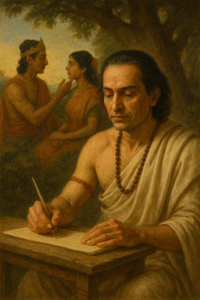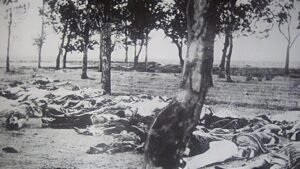Charles Cornwallis, 1st Marquess Cornwallis (1738–1805), remains one of Britain’s most multifaceted figures. His career, marked by military command in the American Revolutionary War and significant administrative reforms in India, encapsulates the complexities of British imperial policy during the 18th century. While Cornwallis is often remembered for his military setbacks—most notably his surrender at Yorktown—his tenure as Governor-General of India provides a critical case study in both modernization and the adverse consequences of colonial reform.

This article traces his journey from his early life and military exploits to his ambitious but contested policies in India, culminating in an exploration of their long-term effects on Indian society.
Early Life and Military Beginnings
Birth and Education
Born on December 31, 1738, into an aristocratic family with a proud military tradition, Cornwallis was groomed for service from an early age. His education instilled discipline and a deep sense of duty, qualities that would define his military and administrative career.
Early Military Service
Cornwallis’s military career began amidst a backdrop of European conflicts and colonial expansion. Serving in various theaters, he gained practical experience that would later inform his leadership during major campaigns. These formative years were critical in shaping his tactical acumen and willingness to take decisive action on the battlefield.
The American Revolutionary War: Triumphs and Setbacks

Rising Through the Ranks
During the American Revolutionary War, Cornwallis quickly rose to prominence. Tasked with commanding forces in the southern colonies, he achieved several tactical victories against American rebels. However, the challenges of waging war in unfamiliar territory soon took their toll.
The Southern Campaigns and the Siege of Yorktown
Cornwallis’s southern campaigns initially demonstrated his military prowess, but they eventually led to the fateful Siege of Yorktown in 1781. Encircled by a combined force of American Continental troops and French allies, his surrender at Yorktown marked a decisive turning point in the war. Although this event sealed the fate of British ambitions in America, Cornwallis’s subsequent career would see him transition to another arena of imperial challenge.
Transitioning to Colonial Administration in India
Following the American debacle, Cornwallis’s expertise was redirected to administrative challenges within the British Empire. In 1786, he was appointed Governor-General of India, where his responsibilities shifted from battlefield command to the reform of colonial governance—a role that would ultimately define his legacy.
Cornwallis in India: Reforms and Administrative Innovations
1. Appointment and Objectives
As Governor-General, Cornwallis inherited a sprawling territory in need of coherent administration. Tasked with establishing order in a land characterized by diverse cultures and long-standing local governance systems, he embarked on an ambitious reform agenda aimed at modernizing the colonial state.
2. Judicial Reforms: Establishing Courts
Recognizing the need for a more predictable legal framework, Cornwallis established a structured judicial system in India. He introduced lower courts and appellate courts, creating a hierarchy of justice to streamline legal proceedings. These courts were designed to ensure fairer trials and a standardized system of justice, although they often prioritized British legal norms over indigenous systems.
3. Military Engagements: The Third Anglo-Mysore War (1790–1792)
Cornwallis played a crucial role in the Third Anglo-Mysore War (1790–1792) against Tipu Sultan, the ruler of Mysore. Leading British and allied forces, he successfully captured key strongholds, forcing Tipu Sultan into the Treaty of Seringapatam in 1792. As part of the treaty, Tipu ceded significant territory and was compelled to provide hostages, including his own sons.
4. Cultural Contributions: Establishment of Sanskrit Vidyalaya in Benaras (1791)
In 1791, under Cornwallis’s tenure, Jonathan Duncan, then Governor of Bombay, established the Sanskrit Vidyalaya in Benaras (now Varanasi). This initiative aimed to promote the study of Sanskrit and preserve traditional Indian knowledge systems, highlighting a rare instance of cultural patronage during British rule.
5. Revenue and Land Management: The Permanent Settlement (1793)
Cornwallis overhauled the land revenue system, culminating in the Permanent Settlement of Bengal and Bihar in 1793. This policy fixed land revenue demands on zamindars (landlords), who were tasked with collecting taxes from peasants. While it provided revenue stability for the British, it often led to the exploitation of peasants, contributing to agrarian distress and rural impoverishment.
6. Introduction of Civil Services in India
To professionalize governance, Cornwallis introduced the first Civil Services in India, recruiting officials through a merit-based system. This initiative laid the foundation for the Indian Civil Services (ICS), which later became a cornerstone of British rule in India.
7. The Cornwallis Code (1793)
One of Cornwallis’s most significant contributions was the Cornwallis Code of 1793, which:
- Reorganized the administrative structure, ensuring a more centralized bureaucracy.
- Implemented judicial standardization, replacing traditional legal practices with a Western-style system.
- Enforced stricter measures against corruption, particularly among British officials.
While these reforms aimed at efficiency and transparency, they often marginalized indigenous governance structures and legal traditions.
Criticisms and the Impact on the Colonized Indian Populace
Despite the administrative efficiency Cornwallis’s reforms brought, they were met with strong criticism due to their adverse effects on Indian society. His centralization of power disrupted traditional governance, weakening local chieftains and village councils. This marginalization of indigenous institutions led to disenfranchisement and later fueled resistance movements.
His revenue reforms, particularly the Permanent Settlement, prioritized British financial interests over local welfare. Peasants and small landholders bore the brunt of high tax assessments, leading to widespread agrarian distress, debt, and even famines. Similarly, his judicial reforms, while introducing a structured legal system, often ignored India’s diverse legal traditions. The Western-style courts were unfamiliar and inaccessible to many Indians, reinforcing British control rather than delivering true justice.
Cornwallis’s broader policies laid the groundwork for an institutionalized colonial system that prioritized imperial interests. His administrative and legal structures facilitated continued resource extraction, creating lasting social and economic inequalities. The forced removal of Tipu Sultan’s sons as hostages further symbolized the coercive nature of British rule, reinforcing narratives of exploitation and cultural insensitivity.

Later Years and Enduring Legacy
Post-India Assignments
After concluding his term in India, Cornwallis continued to serve the British Empire in various capacities, including his role as Lord Lieutenant of Ireland. His administrative acumen, though celebrated in some circles, remained a subject of contentious debate in others.
Death and Historical Reassessment
Charles Cornwallis died on October 5, 1805, leaving behind a legacy that encapsulates both military failure and administrative innovation. His surrender at Yorktown is often cited as a pivotal moment in the American struggle for independence, yet his work in India has had a lasting impact on the development of colonial governance.
Dual Legacy: Modernization and Exploitation
Cornwallis’s reforms anticipated many modern administrative practices by emphasizing accountability, standardization, and legal uniformity. However, these same policies also entrenched systems of economic exploitation and cultural alienation that adversely affected the colonized Indian populace. For many Indians, the changes initiated under Cornwallis were a double-edged sword—ushering in a more systematic governance structure while simultaneously undermining traditional institutions and exacerbating social and economic inequalities.
Enduring Legacy
Charles Cornwallis’s life is a study in contrasts. His career spans the transformation from a battlefield commander in the American Revolutionary War to a colonial administrator in India whose reforms reshaped the governance of a vast and diverse territory. While his tenure in India is credited with modernizing the administrative and judicial systems, it is equally criticized for instituting policies that centralized power, economically exploited local populations, and marginalized indigenous practices. The legacy of Cornwallis’s reforms is therefore complex—representing both the advancement of modern bureaucratic governance and the deep-seated challenges of colonial domination that continued to affect Indian society long after his departure.
Bibliography
- Primary Sources
- Cornwallis, Charles. The Correspondence of Lord Cornwallis, 1771–1791. Edited by J. H. Smith. Oxford: Oxford University Press, 1995.
A collection of Cornwallis’s letters that provides firsthand insight into his thoughts on military and administrative challenges during his career.
- Cornwallis, Charles. The Correspondence of Lord Cornwallis, 1771–1791. Edited by J. H. Smith. Oxford: Oxford University Press, 1995.
- Secondary Sources
- Bayly, C. A. Indian Society and the Making of the British Empire. Cambridge: Cambridge University Press, 1988.
An influential work that examines how British policies, including those introduced by Cornwallis, reshaped Indian society and governance. - Bowles, Henry V. Cornwallis: The Imperial Reformer. London: Oxford University Press, 2002.
A comprehensive biography that traces Cornwallis’s career from his military exploits to his controversial reforms in India. - Fortescue, Sir John William. A History of the British Army. Vols. I–III. London: Macmillan, 1904–1919.
A classic military history that provides context for Cornwallis’s campaigns and his role in the American Revolutionary War. - Marshall, P. J. Colonialism and its Forms of Knowledge: The British in India. Chicago: University of Chicago Press, 1996.
An exploration of the knowledge systems and administrative practices the British employed in India, including an analysis of Cornwallis’s reforms. - Metcalf, Thomas R. Ideologies of the Raj. Cambridge: Cambridge University Press, 1995.
This book offers a critical perspective on the ideological underpinnings of British colonial rule in India, with discussions relevant to Cornwallis’s centralization policies. - Roberts, R. A. The Life and Times of Lord Cornwallis. New York: Harper & Row, 1988.
A detailed account of Cornwallis’s career that situates his administrative achievements and military setbacks within the broader context of British imperial history. - Sarkar, Sumit. Modern India, 1885–1947. New Delhi: Macmillan, 1983.
While focusing on a later period, Sarkar’s work provides useful insights into the long-term impacts of early colonial administrative reforms on Indian society. - Smith, D. The Administration of India under Cornwallis: Reforms and Criticisms. New Delhi: Sage Publications, 1999.
A focused study on Cornwallis’s tenure in India that examines both the intended benefits of his reforms and their adverse consequences for the local population.
- Bayly, C. A. Indian Society and the Making of the British Empire. Cambridge: Cambridge University Press, 1988.






